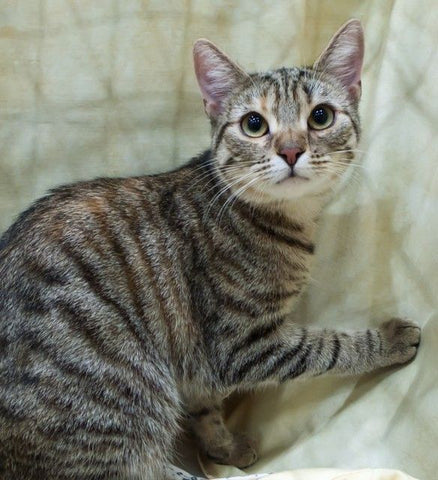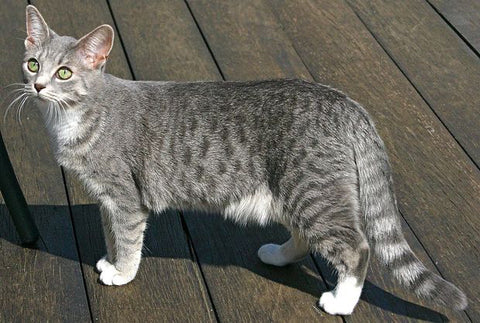6 Terrific Tabby Facts About Terrific Tabby Cats
With over 80 percent of our domesticated feline companions being of the striped variety, tabby cats are one of the most popular cats out there. So to celebrate these tiny house tigers and all their stripe-y, "tabbitude" glory, we've compiled a few interesting tabby cat facts, just a few tabby tidbits about these fluffy felines.
Tabby cats come in all shapes, sizes, and colors.
Contrary to popular belief, "tabby" doesn't refer to a breed of cat, but rather refers to the distinctive striped coat pattern. As such, a tabby cat can be any breed or color.

In fact, no matter what color or markings your cat may have, all cats have the tabby cat gene; other colors and patterns may mask the tabby marks, but the gene is always present. Have you ever seen a black cat in the sun and seen the subtle stripes? That's the tabby gene at work!
Tabbies got their name from silk made in Baghdad.
The origin of the term "tabby" can be traced from French tabis, stemming from Medieval Latin attabi, from Arabic attabi, from al-Attabiya, a suburb of Baghdad, Iraq, This "suburb" was named for the Prince Attab, and was well-known for production of a special striped silk cloth. Cats got the name tabby after the similarity of their coats to the patterned silk cloth ... or maybe the cats inspired the pattern!
Most orange tabby cats are males.
The ratio is about 80 percent male to 20 percent female orange cats.
And it's all thanks to genetics! A male orange tabby only needs the orange gene from their mother, whereas a female ginger needs the gene from the mother and father.

Our office foster cat, Thomas, showing off his distinctive tabby marks!
The tabby coat emerged in the Middle Ages

In Medieval times, Egyptian cats spread throughout the Mediterranean along trade routes, catching rides on ships. Mariners used these feline predators as medieval pest control and hunt rats on board the ships.
As these striped cats spread, the tabby pattern, which is in 80 percent of present-day cats, became more frequent in southwest Asia, Africa and also Europe, and was quite common by the 18th century.
There are five types of tabby patterns
While tabby coats come in many different variations, there are five main types of tabby that you'll find: Mackerel, Classic, Spotted, Ticked and Patched. See photos below!
Mackerel Tabby

Classic Tabby

Spotted

Ticked

Patched

What type of tabby do you have?

















The real story about Muezza was to let people know to respect cats them because they keep us safe from rodents that caused the bubonic plague at that and the present time besides protecting food supplies they were kept in street stores and markets.
My 2 orange tabby boys have both mackerel and spotted coats.
So Kawaii <3 >w< !!!!!!!
Fritz is an orange tabby-and-white longhair. He’s a mackerel tabby, but his stripes are very faint. They are most visible after he’s had a lion cut.
My mother used to have an orange tabby called Stiller. If memory serves, he was a mackerel tabby.
Mackerel tabbies, for the record, are sometimes described as having tiger stripes.
I have 2 black cats that appear to be mackerels when they lounge in the sun :)
Leave a comment